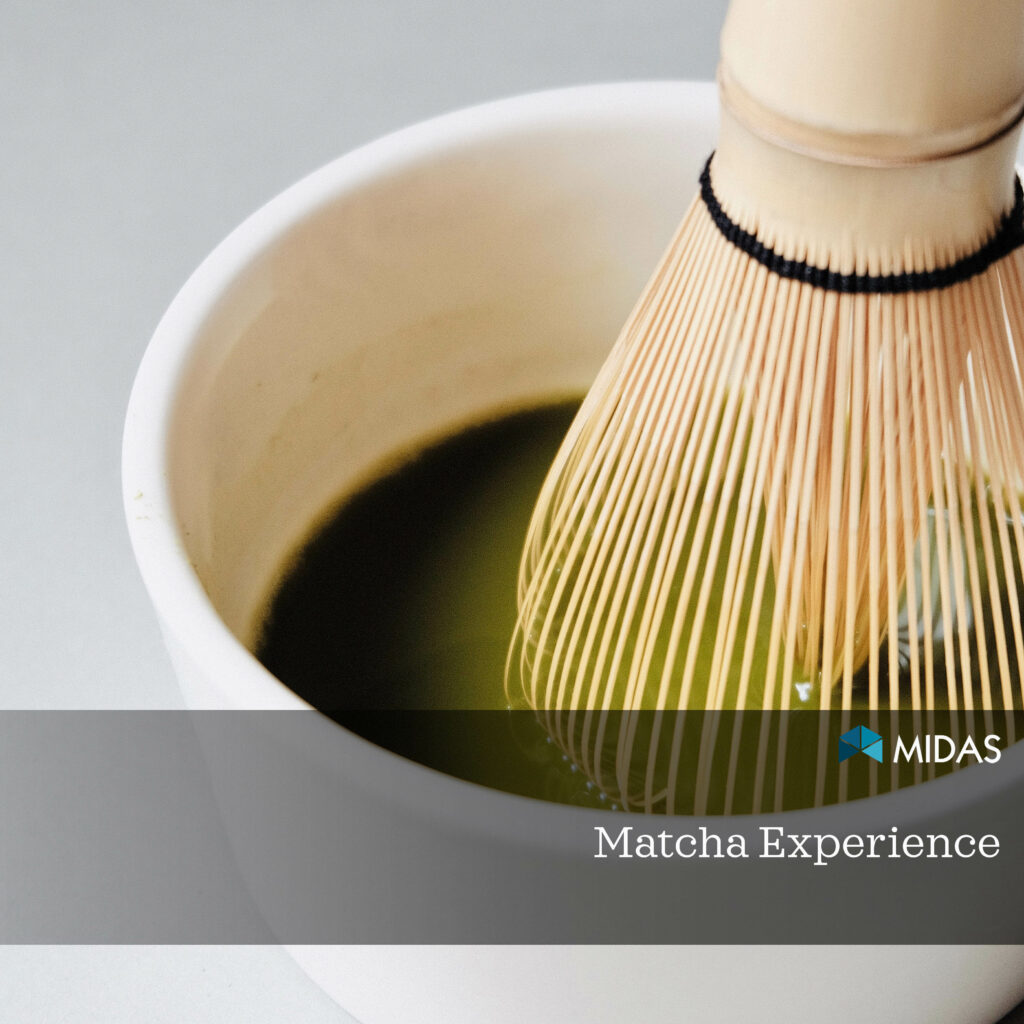
Japan, your mind slowly drifts to images of elegant ladies dressed in kimonos, delicately pouring tea into handcrafted teacups. The way of tea, or Ichi-go ichi-e as it is locally known, is just as important as enjoying the tea. According to local tradition, during a tea ceremony, the underlying Japanese ethos is that you should treat your encounter with that person as if it is the first and last encounter that you will ever have with them. The preparation of the tea is used to provide a connection between the people.
There are actually 28 varieties of tea Sencha is the most common, sweet and mild. Gyokuro has strong aromas. Hōjicha is savory but the most classic is Matcha.
Let’s talk some more about Matcha, it is bright green and made from ground-up tea leaves that are grown in Japan. Matcha is created under shade-grown conditions and is a pure powdered form.
Matcha had 3 grades. Ceremonial, Premium and Cooking. Ceremonial is used in tea ceremonies, Premium for everyday enjoyment and the cooking grade is used for sweets . Matcha can be made in two ways, usucha (thin) and koicha (thick).
The thin tea is made using a bamboo whisk and is made with a creamy head. The thicker variation has no cream. It has a dense syrup like constancy and is dark forest green in colour.
In Tokyo, you don’t have to go to a formal tea ceremony to experience your Matcha, You can go to a tea house, which is a lot more relaxed and has a cafe-style ambiance. Nakamura Tokichi, founded in 1854 in Uji Shi, is one such place. It is a UNESCO world heritage site. It serves all varieties of Matcha and delicious desserts to accompany them.
I’m sure this article has got you curious to try your very own Matcha, in Japan. At Midas, we are here to orchestrate this unique experience for you. We will look after all the details, remembering to dot our i’s and cross our tea’s!
